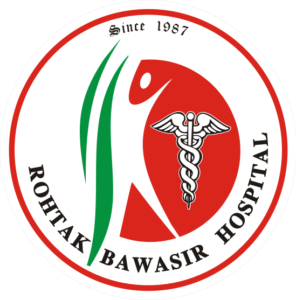From Pain to Recovery: The Modern Approach to Treating Piles


Updated on: 4th Jun 2024
Hemorrhoids, another name for piles, are a prevalent ailment that affects millions of individuals globally. Many are reluctant to seek treatment because of shame or a fear of invasive treatments, even though they cause pain and discomfort. But thanks to advancements in medicine, treating piles is now faster, less painful, and more effective than in the past. We’ll look at the route from pain to recovery in this blog, emphasizing the state-of-the-art choices for therapy.
Understanding Piles: What Are They?

Similar to varicose veins, piles are enlarged veins seen in the lower rectum and anus. They might be external, under the skin surrounding the anus, or internal, inside the rectum. The illness is frequently linked to persistent constipation, pregnancy, obesity, and straining during bowel motions.
Symptoms of Piles

The symptoms of piles vary depending on the severity and type. Common signs include:
- Pain or discomfort during bowel movements
- Itching or irritation in the anal region
- Swelling around the anus
- Bleeding during bowel movements
- A lump near the anus, which may be sensitive or painful
Traditional Treatments: A Brief Overview

Historically, piles were treated with lifestyle changes, home remedies, or surgical procedures. While these methods are still in use, they often involve significant discomfort and a lengthy recovery period.
Dietary Changes: Increasing fiber intake and staying hydrated are the first lines of defense against piles. These changes help soften the stool, reducing the need to strain during bowel movements.
Over-the-Counter Treatments: Creams, ointments, and suppositories are commonly used to relieve symptoms like pain, itching, and swelling.
Surgical Procedures: In severe cases, surgery was traditionally the only option. Procedures like hemorrhoidectomy, where the hemorrhoids are surgically removed, are effective but come with risks and a long recovery time.
Modern Approaches to Treating Piles

The modern approach to treating piles focuses on less invasive procedures with minimal downtime. These methods are designed to reduce pain, speed up recovery, and offer long-lasting relief.
Rubber Band Ligation
One of the most popular modern treatments, rubber band ligation, involves placing a small rubber band around the base of the hemorrhoid. This cuts off the blood supply, causing the hemorrhoid to shrink and eventually fall off. The procedure is quick, usually done in a doctor’s office, and most patients can return to their regular activities the same day.
Sclerotherapy
Sclerotherapy involves injecting a solution into the hemorrhoid that causes it to shrink. This method is particularly effective for smaller internal hemorrhoids. It’s minimally invasive and requires no anesthesia, making it a convenient option for many patients.
Infrared Coagulation (IRC)
IRC uses infrared light to coagulate the blood vessels in the hemorrhoid, causing it to shrink. This procedure is quick and virtually painless, with most patients experiencing significant relief after just one session.
Stapled Hemorrhoidopexy
A more advanced surgical option, stapled hemorrhoidopexy, involves using a circular stapling device to remove hemorrhoid tissue and reposition the remaining tissue. This procedure is less painful than traditional hemorrhoidectomy and has a faster recovery time.
Laser Treatment
Laser treatment for piles is one of the latest advancements, offering precision and minimal discomfort. The laser is used to remove or shrink the hemorrhoid tissue, reducing the risk of bleeding and infection. Patients often experience immediate relief and a quick return to normal activities.
Post-Treatment Care: Ensuring a Smooth Recovery

Recovering from piles treatment is often quick, especially with modern methods. However, proper post-treatment care is essential to prevent recurrence and ensure long-term relief.
Diet and Hydration: Continue to consume a high-fiber diet and drink plenty of water to keep stools soft and prevent straining.
Hygiene: Keep the anal area clean and dry. Avoid using harsh soaps or wipes that can irritate the skin.
Avoid Straining: Straining during bowel movements is a leading cause of piles. Consider using a stool softener if necessary and avoid sitting on the toilet for extended periods.
Follow-Up Care: Regular follow-up appointments with your doctor can help monitor your recovery and address any concerns promptly.
Prevention: Keeping Piles at Bay

Preventing piles is possible with a few lifestyle changes. By taking proactive steps, you can reduce your risk of developing piles or experiencing a recurrence.
Maintain a Healthy Weight: Obesity is a significant risk factor for piles. Regular exercise and a balanced diet can help you maintain a healthy weight.
Stay Active: Regular physical activity can help improve digestion and reduce the likelihood of constipation, a common cause of piles.
Don’t Ignore the Urge: When you feel the need to have a bowel movement, don’t delay. Waiting can lead to harder stools and increased straining.
Avoid Prolonged Sitting: Sitting for long periods, especially on the toilet, can increase pressure on the anal veins. Take breaks and move around if you have a sedentary job.
Conclusion
Although piles can be a painful and distressing ailment, there are effective treatment methods available today that require little downtime or discomfort. Patients now have access to a variety of alternatives catered to their specific needs, ranging from minimally invasive procedures like rubber band ligation and sclerotherapy to sophisticated surgical options including stapled hemorrhoidopexy and laser treatment.
You can go from pain to recovery fast and effectively if you are aware of the current methods for treating piles and take the required aftercare measures. Preventive actions can also assist you in keeping a healthy, clutter-free life.
Meet Our Specialists

Dr. Raj Kumar Garg (B.A.M.S.)
40+ Years of Experience

Dr. Rahul Garg (B.A.M.S.)
15+ Years of Experience

